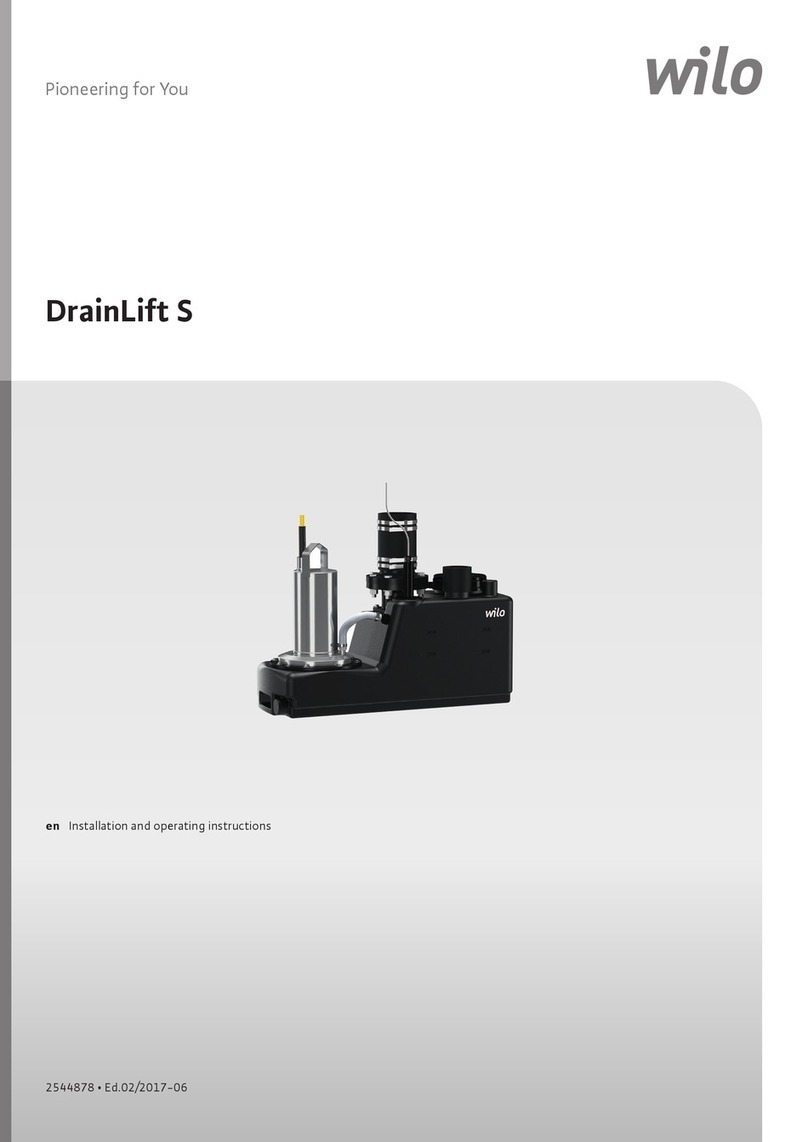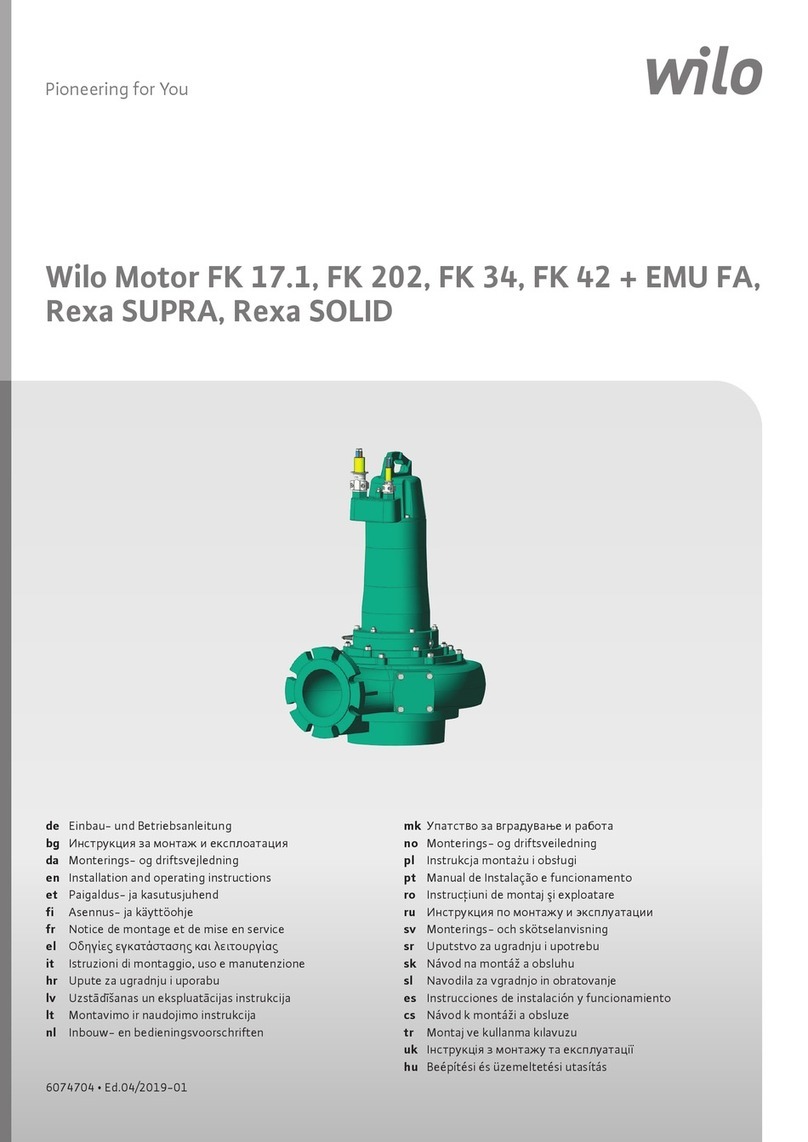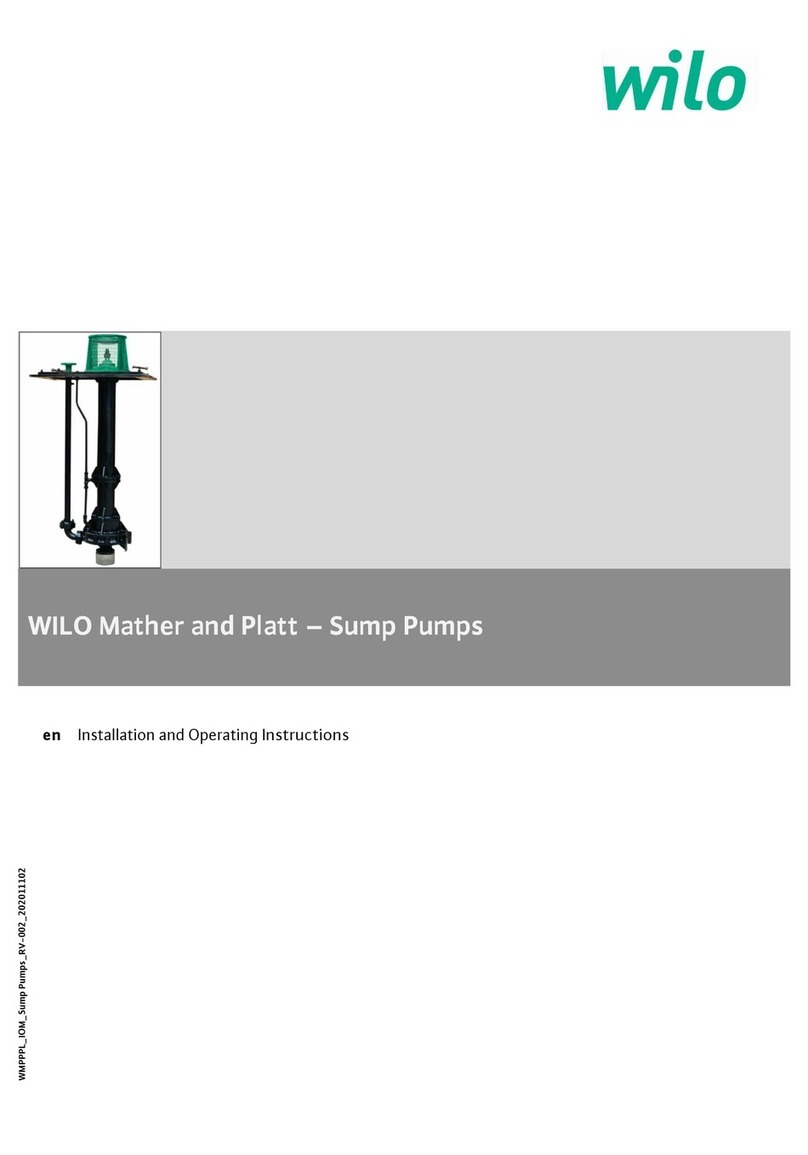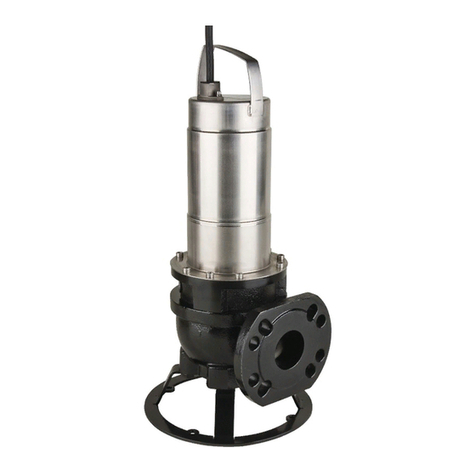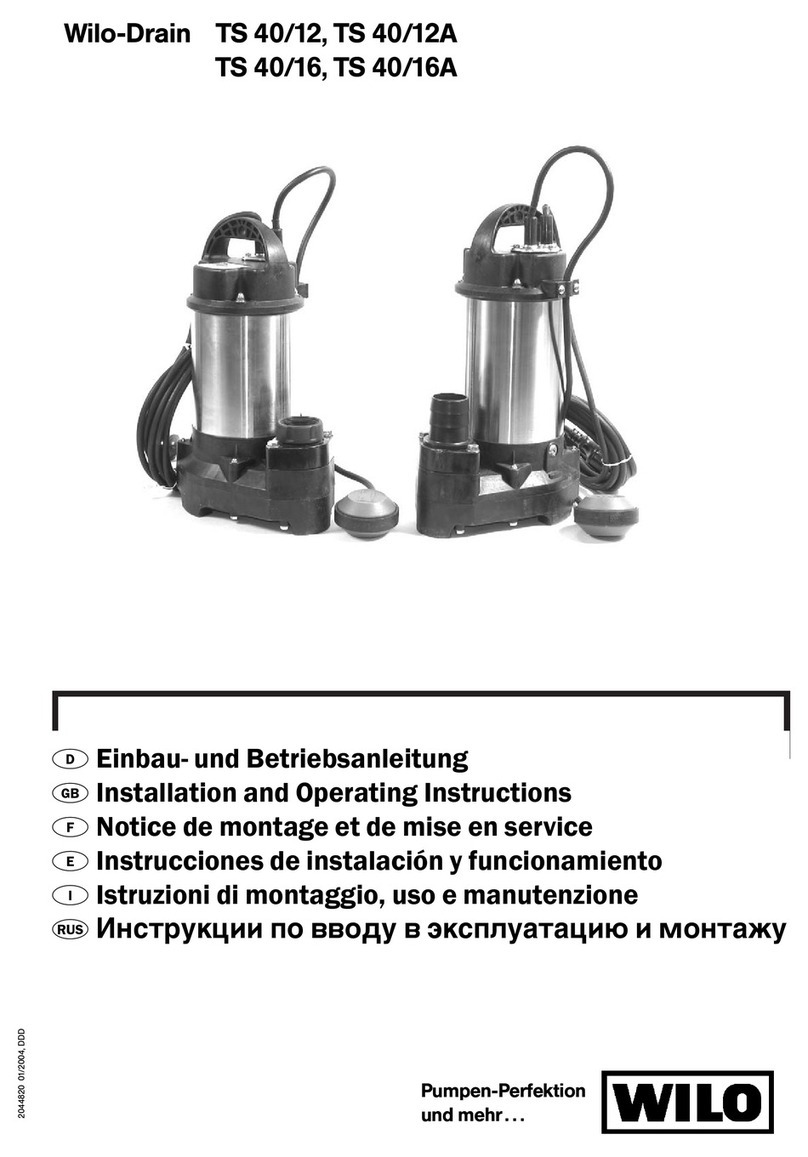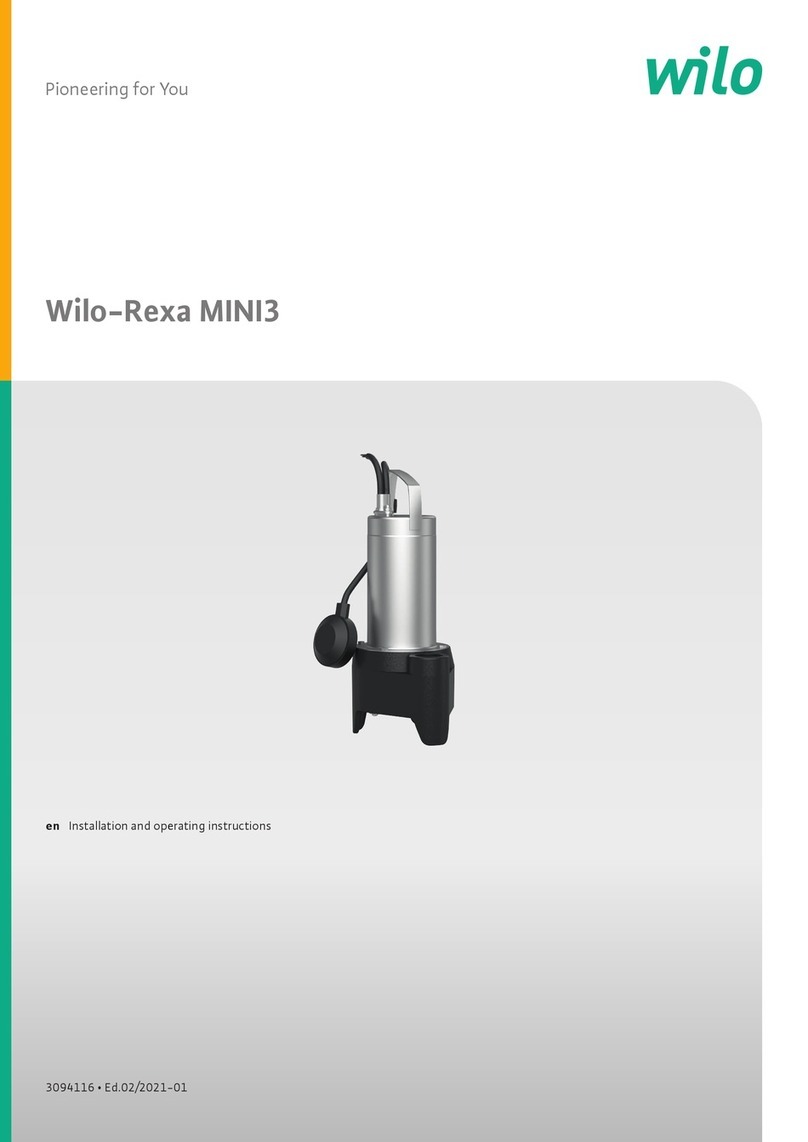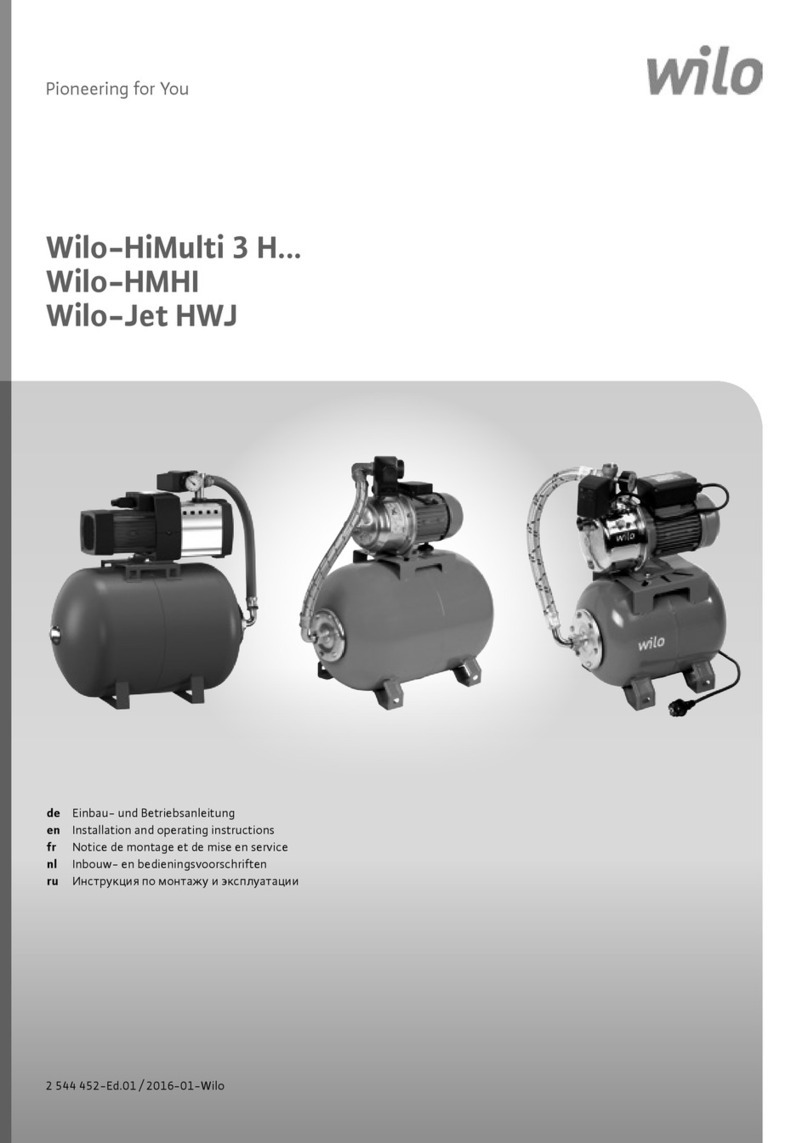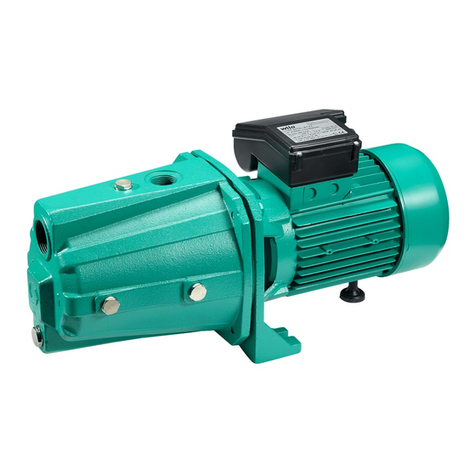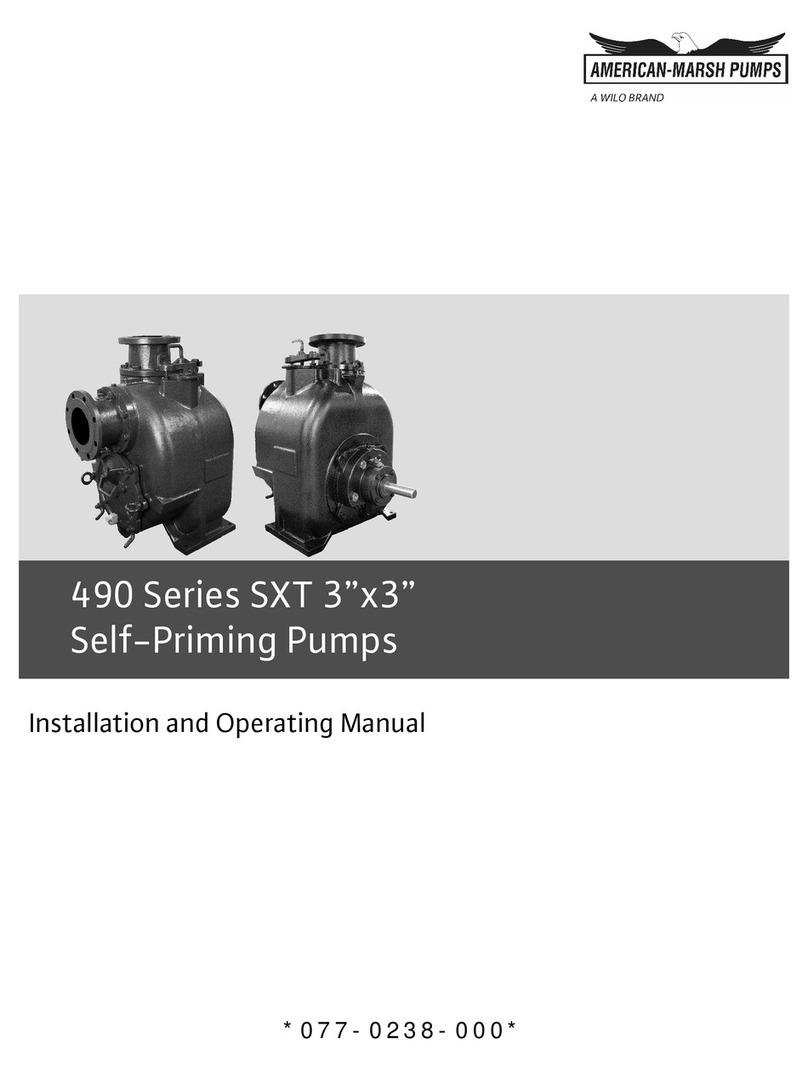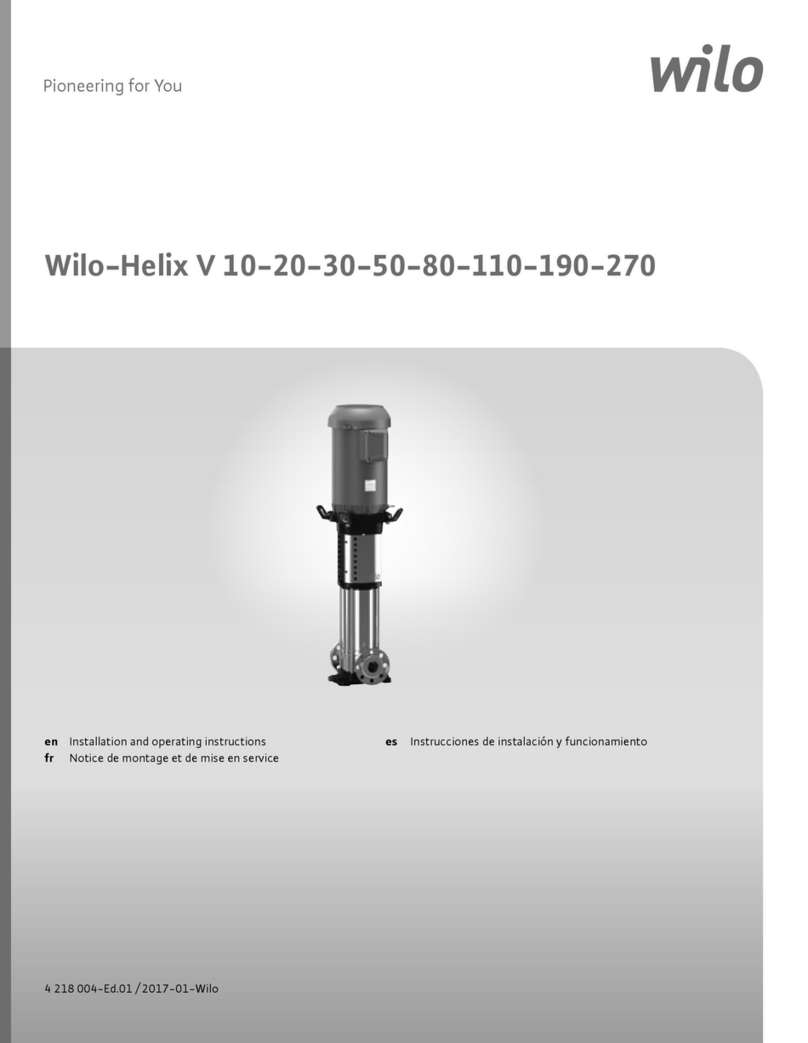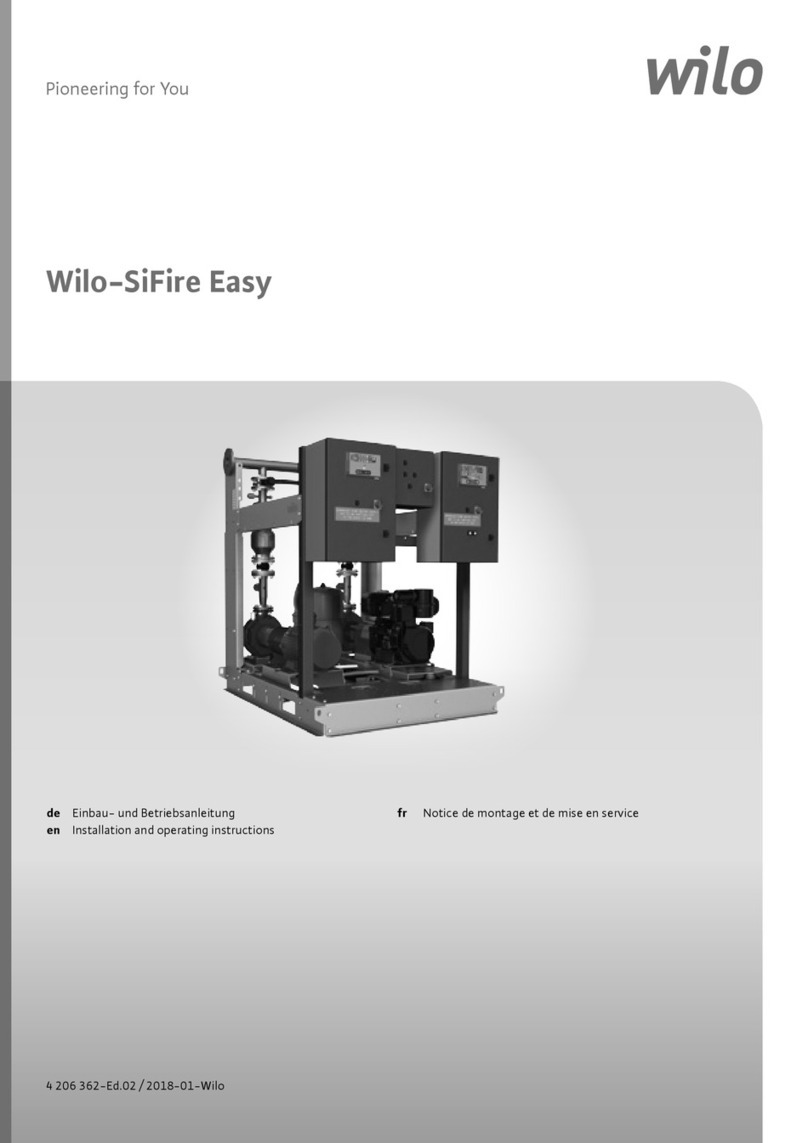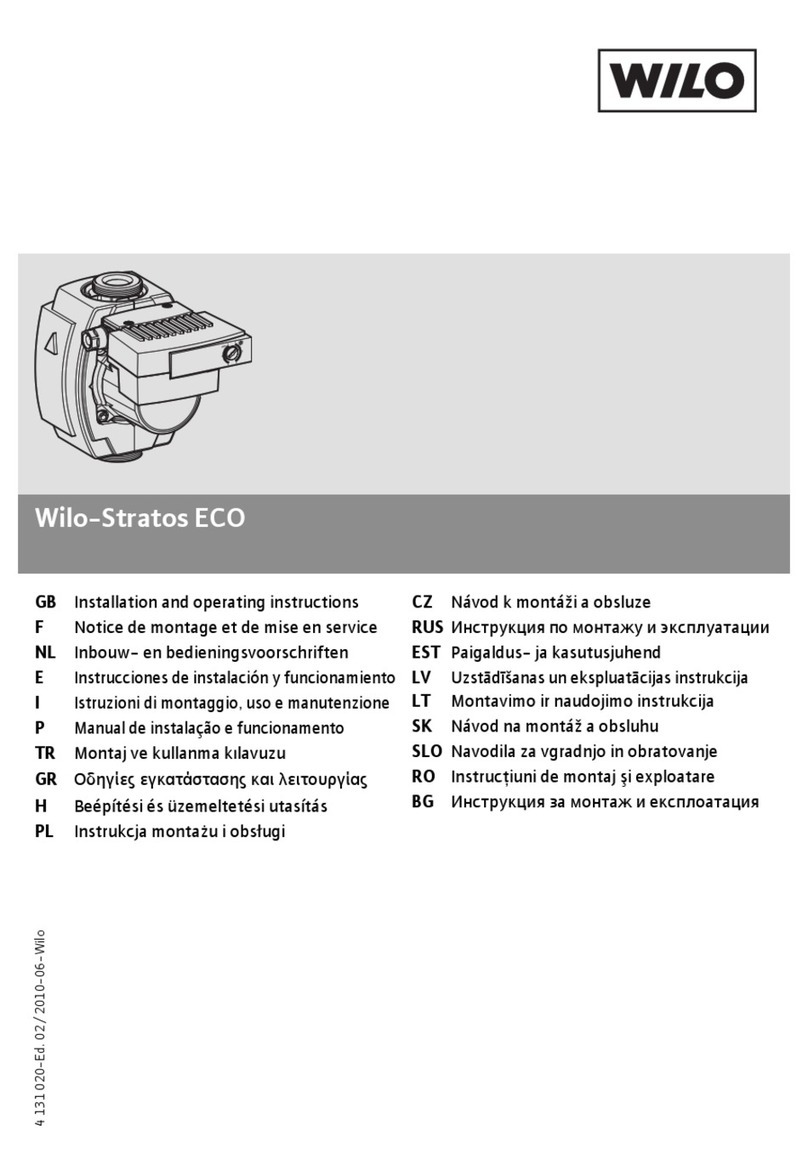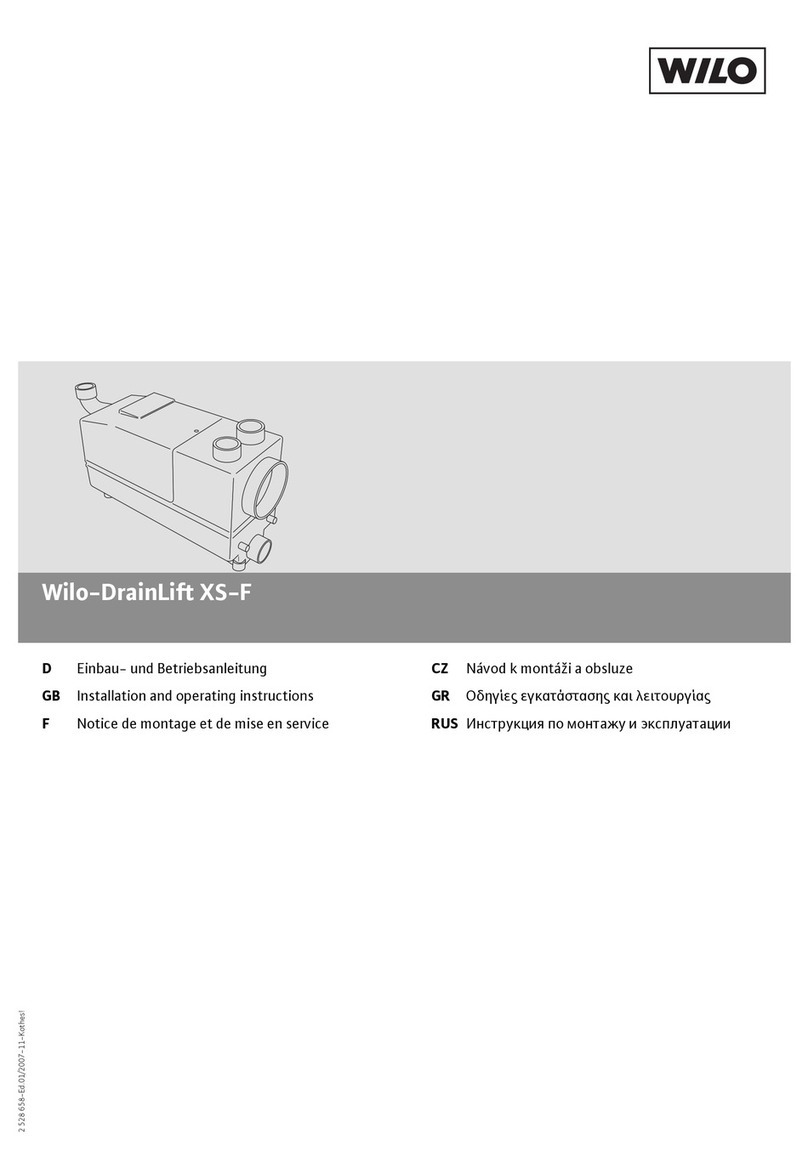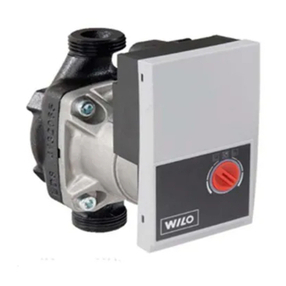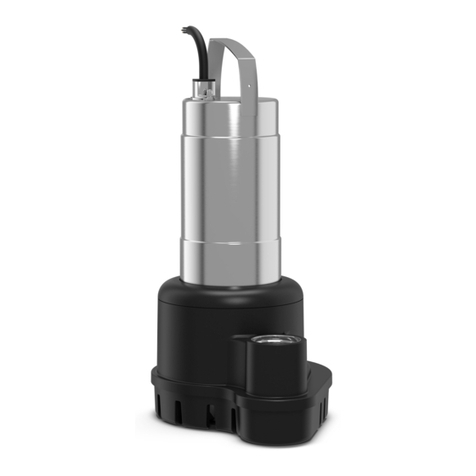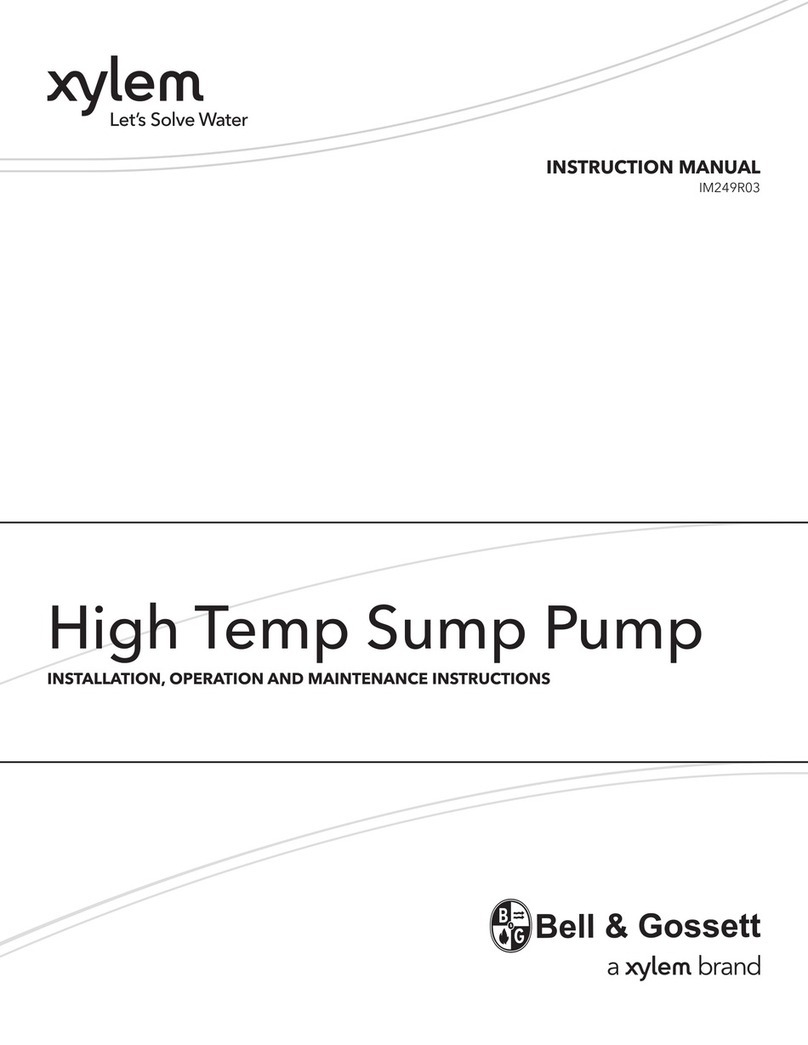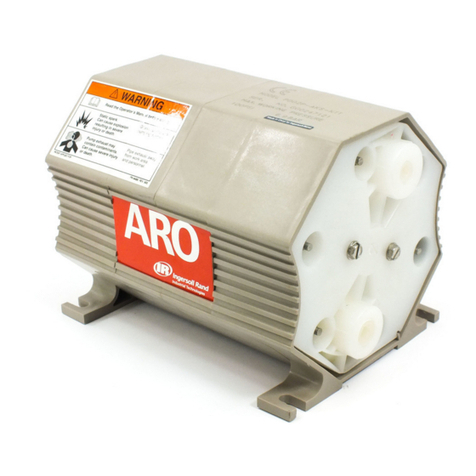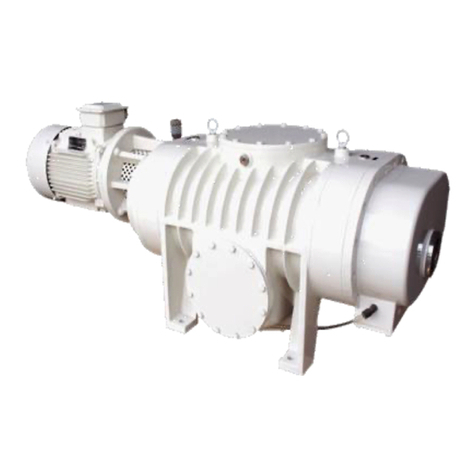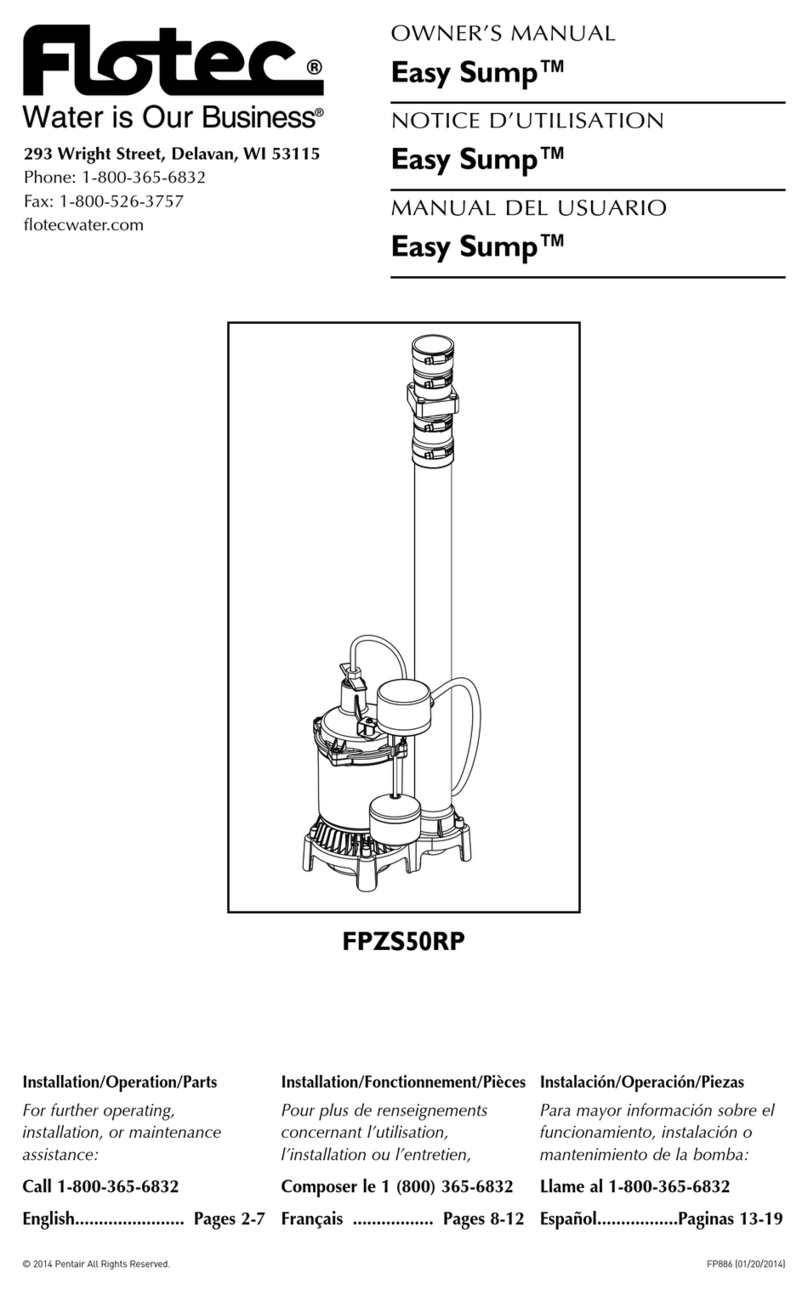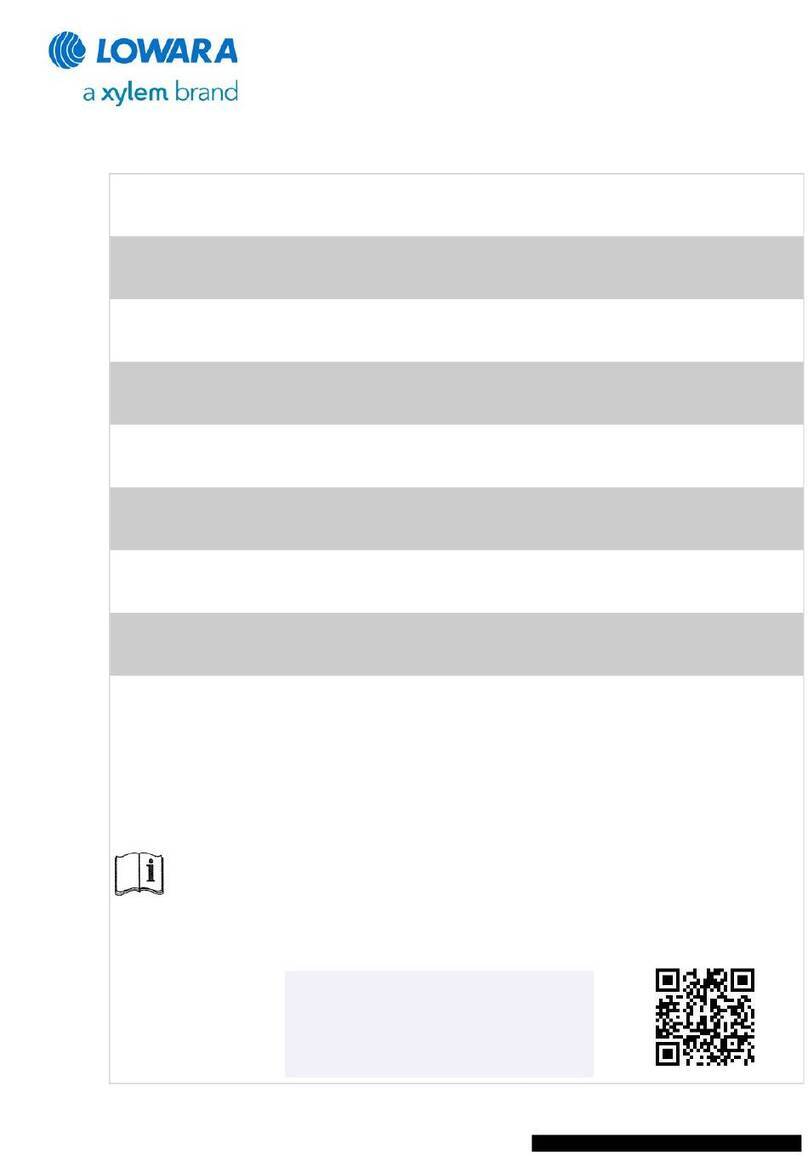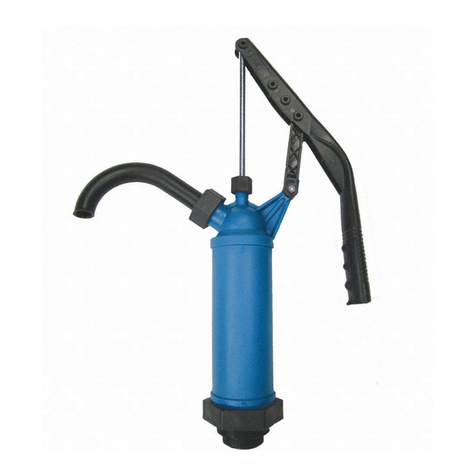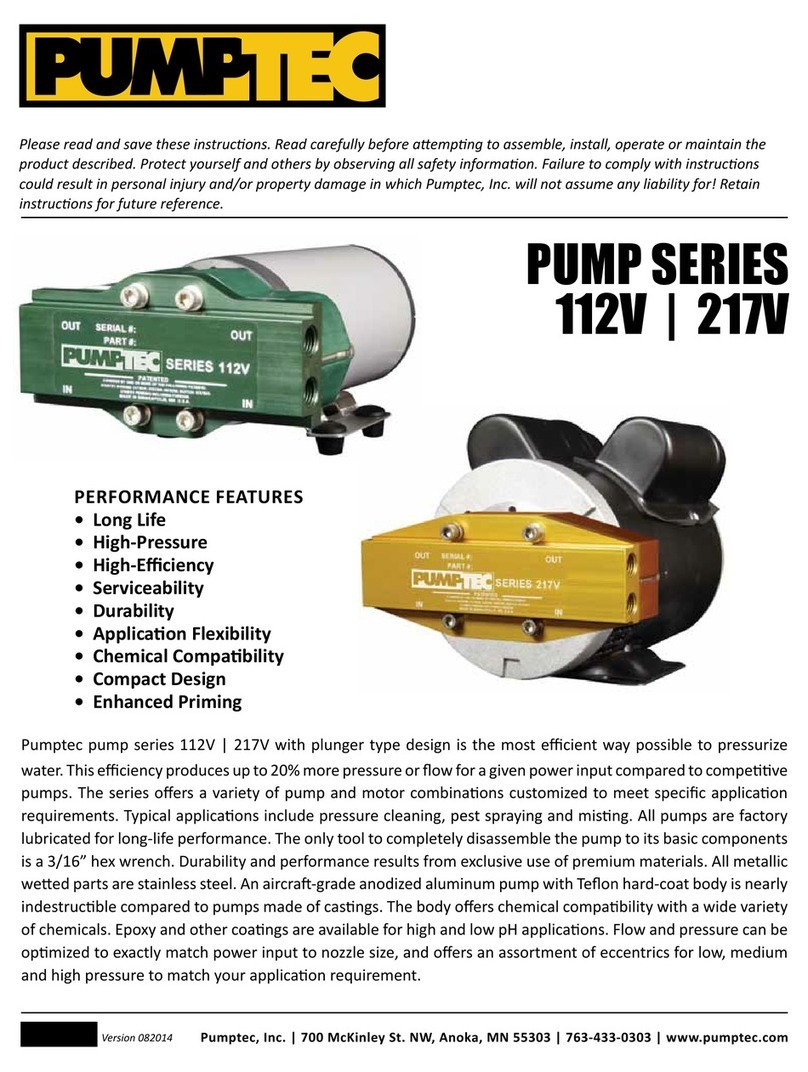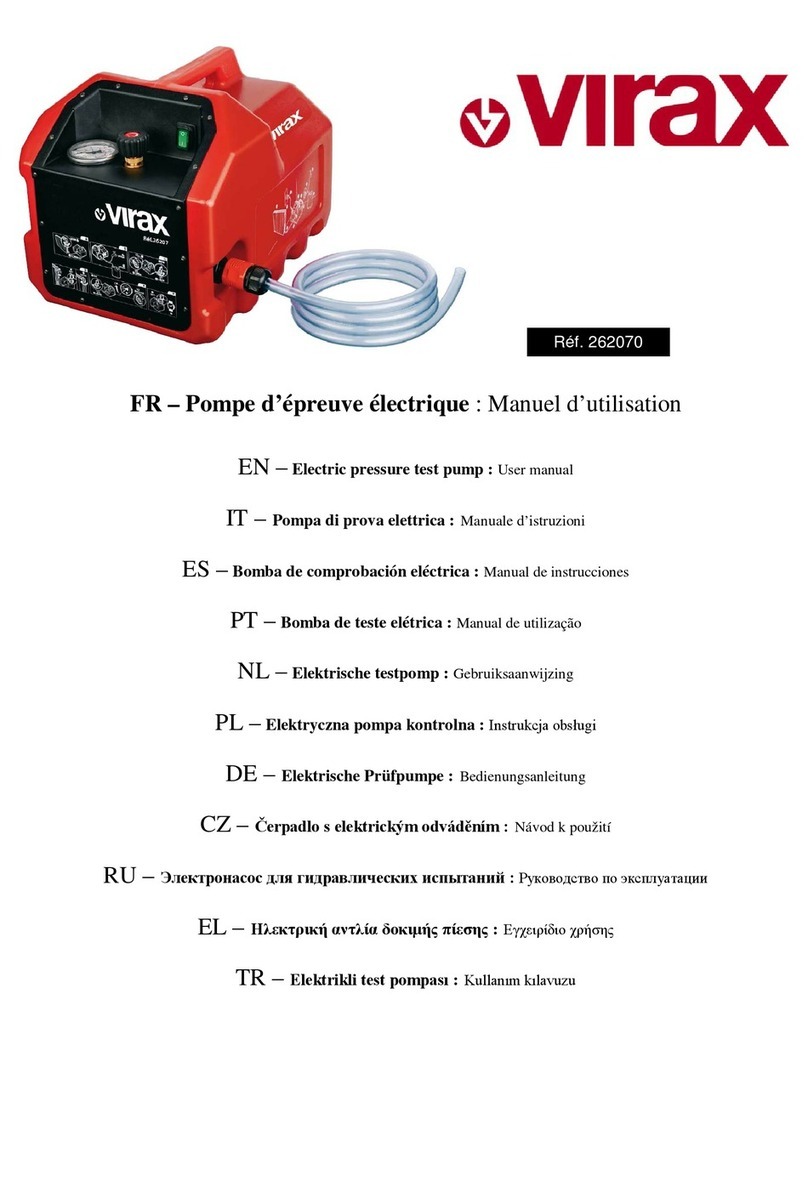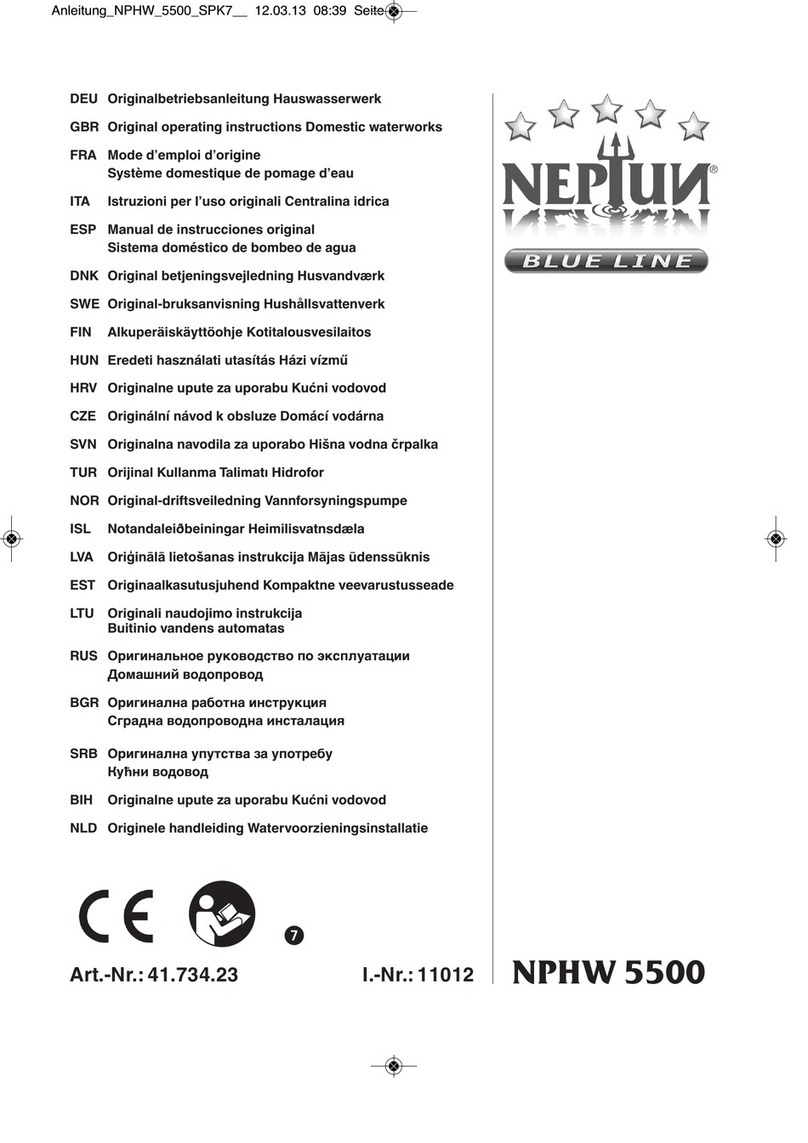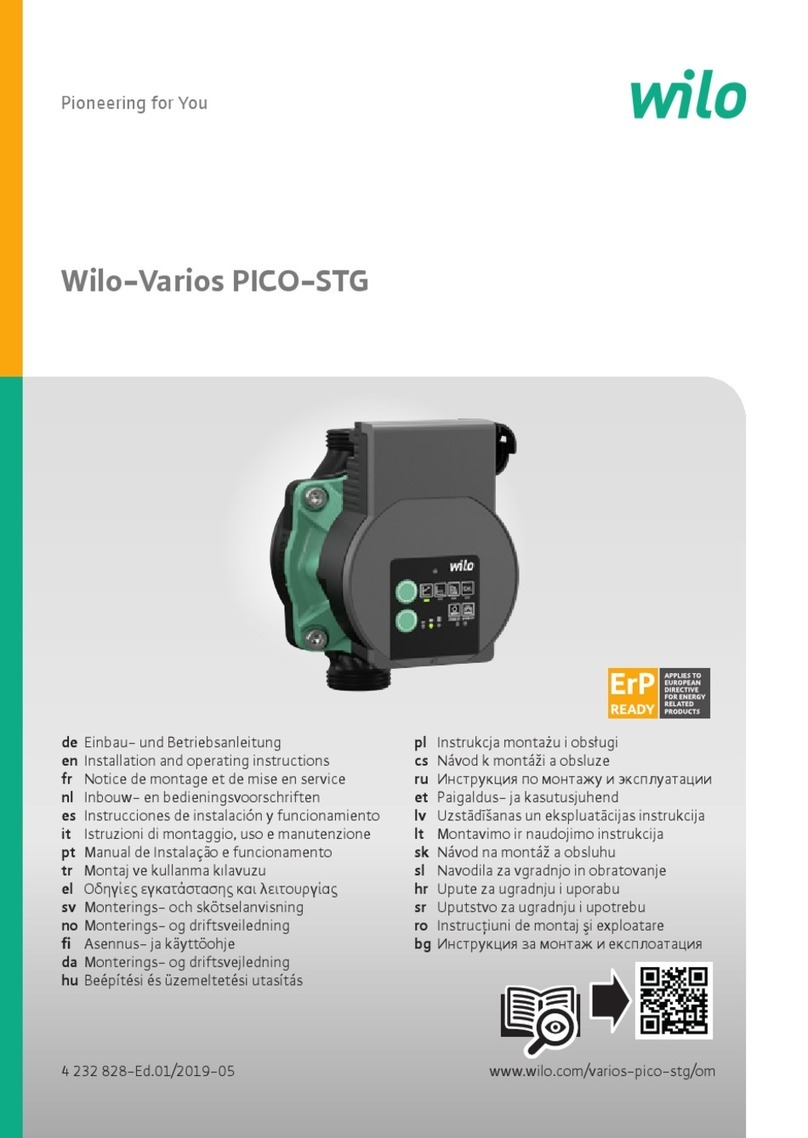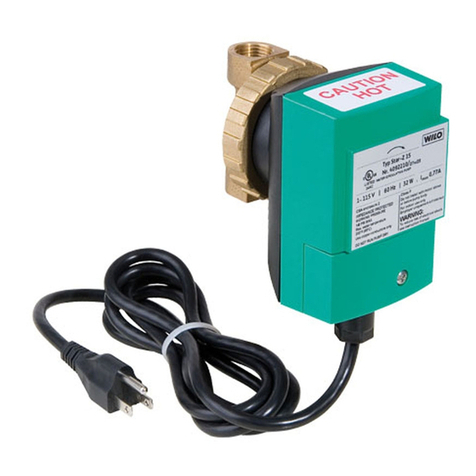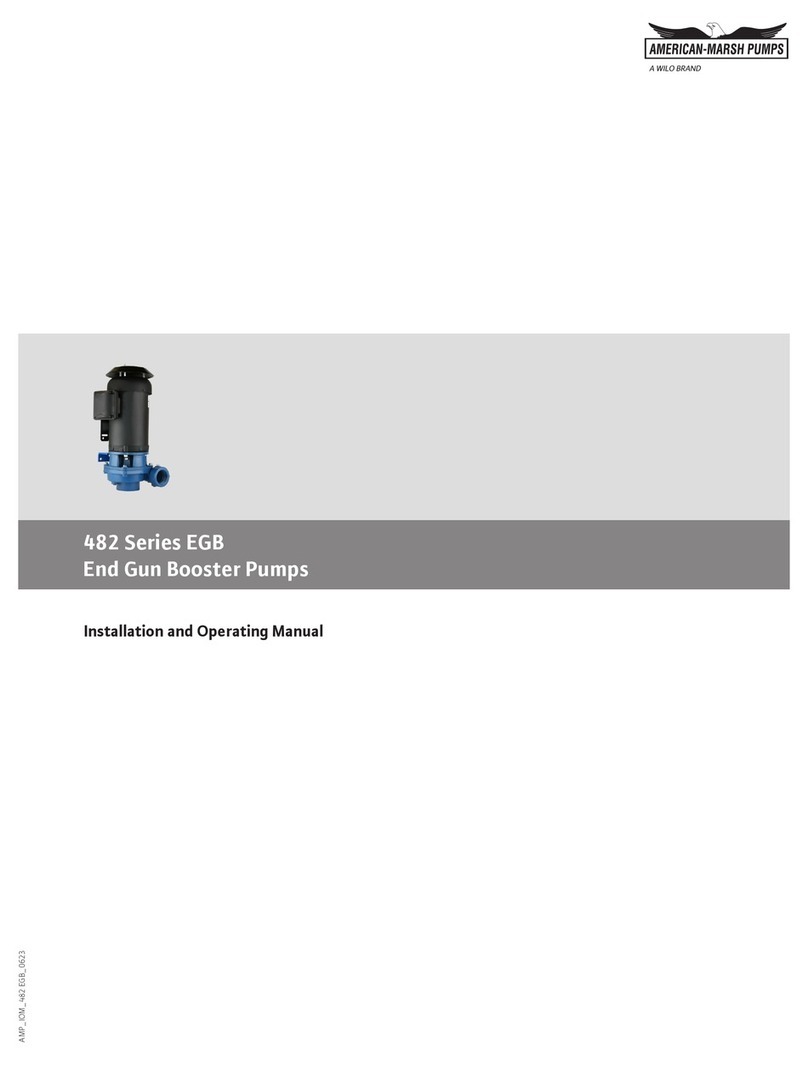
7
flange faces, and the impeller surface are
sprayed with Calgon Vestal Labs RP-743m, or
equal. Exposed shafts are taped with Polywrap.
e. Flange faces are protected with plastic covers
secured with plastic drive bolts. 3/16 in (7.8
mm) steel or 1/4 in (6.3 mm) wood covers with
rubber gaskets, steel bolts, and nuts are
available at extra cost.
f. All assemblies are bolted to a wood skid which
confines the assembly within the perimeter of
the skid.
g. Assemblies with special paint are protected with
a plastic wrap.
h. Bare pumps, when not mounted on base plates,
are bolted to wood skids.
i. All assemblies having external piping (seal flush
and cooling water plans), etc. are packaged and
braced to withstand normal handling during
shipment. In some cases components may be
disassembled for shipment. The pump must be
stored in a covered, dry location.
LONG-TERM STORAGE
Long-term storage is defined as more than two months,
but less than 12 months. The procedure American-
Marsh follows for long-term storage of pumps is given
below. These procedures are in addition to the short-
term procedure.
Solid wood skids are utilized. Holes are drilled in the
skid to accommodate the anchor bolt holes in the base
plate, or the casing and bearing housing feet holes on
assemblies less base plate. Tackwrap sheeting is then
placed on top of the skid and the pump assembly is
placed on top of the Tackwrap. Metal bolts with washers
and rubber bushings are inserted through the skid, the
Tackwrap, and the assembly from the bottom of the skid
and are then secured with hex nuts. When the nuts are
“snugged” down to the top of the base plate or casing
and bearing housing feet, the rubber bushing is
expanded, sealing the hole from the atmosphere.
Desiccant bags are placed on the Tackwrap. The
Tackwrap is drawn up around the assembly and
hermetically (heat) sealed across the top. The assembly
is completely sealed from the atmosphere and the
desiccant will absorb any entrapped moisture. A solid
wood box is then used to cover the assembly to provide
protection from the elements and handling. This
packaging will provide protection up to twelve months
without damage to mechanical seals, bearings, lip seals,
etc. due to humidity, salt laden air, dust, etc. After
unpacking, protection will be the responsibility of the
user. Addition of oil to the bearing housing will remove
the inhibitor. If units are to be idle for extended periods
after addition of lubricants, inhibitor oils and greases
should be used.
Every three months, the shaft should be rotated
approximately 10 revolutions.
INSTALLATION & ALIGNMENT
FACTORY PRELIMINARY ALIGNMENT
PROCEDURE
The purpose of factory alignment is to ensure that the
user will have full utilization of the clearance in the motor
holes for final job-site alignment. To achieve this, the
factory alignment procedure specifies that the pump be
aligned in the horizontal plane to the motor, with the
motor foot bolts centered in the motor holes. This
procedure ensures that there is sufficient clearance in
the motor holes for the customer to field align the motor
to the pump, to zero tolerance. This philosophy requires
that the customer be able to place the base in the same
condition as the factory. Thus the factory alignment will
be done with the base sitting in an unrestrained
condition on a flat and level surface. This standard also
emphasizes the need to ensure the shaft spacing is
adequate to accept the specified coupling spacer. The
factory alignment procedure is summarized below:
1. The base plate is placed on a flat and level
work bench in a free and unstressed
position.
2. The base plate is leveled as necessary.
Leveling is accomplished by placing shims
under the rails (or, feet) of the base at the
appropriate anchor bolt hole locations.
Levelness is checked in both the longitudinal
and lateral directions.
3. The motor and appropriate motor mounting
hardware is placed on the base plate and
the motor is checked for any planar soft-foot
condition. If any is present it is eliminated
by shimming.
4. The motor feet holes are centered around
the motor mounting fasteners.
5. The motor is fastened in place by tightening
the nuts on two diagonal motor mounting
studs.
6. The pump is put onto the base plate and
leveled. If an adjustment is necessary, we
add or delete shims between the pump foot
and the base plate.
7. The spacer coupling gap is verified.
8. The parallel and angular vertical alignment
is made by shimming under the motor.
9. All four motor feet are tightened down.
10. The pump and motor shafts are then aligned
horizontally, both parallel and angular, by
moving the pump to the fixed motor. The
pump feet are tightened down.
